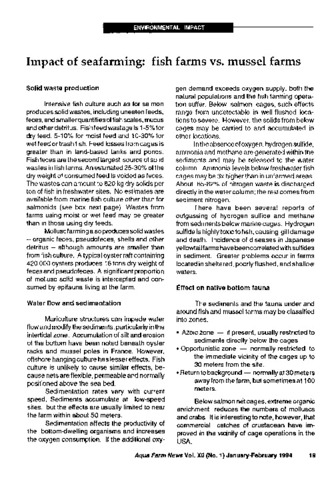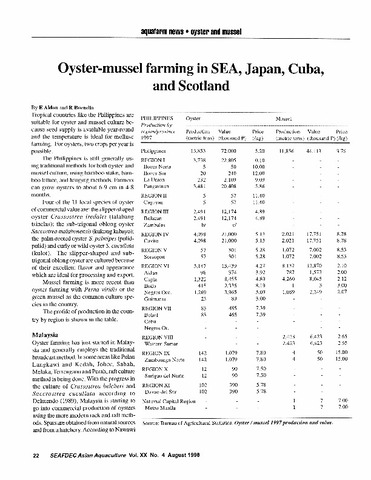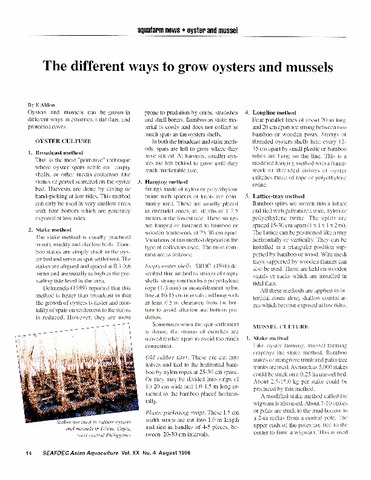| dc.contributor.author | Tendencia, Eleonor | |
| dc.date.accessioned | 2014-05-21T09:18:32Z | |
| dc.date.available | 2014-05-21T09:18:32Z | |
| dc.date.issued | 2007 | |
| dc.identifier.citation | Tendencia, E. A. (2007). Polyculture of green mussels, brown mussels and oysters with shrimp control luminous bacterial disease in a simulated culture system. Aquaculture, 272(1-4), 188-191. | en |
| dc.identifier.issn | 0044-8486 | |
| dc.identifier.uri | http://hdl.handle.net/10862/2072 | |
| dc.description.abstract | Shrimp mortality due to luminous bacteria has been a problem of the shrimp industry worldwide. Polyculture of shrimp with finfish, such as grouper, seabass, snapper, siganid, Tilapia hornorum, and the Genetically Improved Farmed Tilapia (GIFT), could control the growth of luminous bacteria. One way to reduce adverse environmental impact and to reduce bacterial count is through the use of bivalves to filter pond effluents.
This study investigated the effect of several bivalves on the growth of luminous bacteria in a simulated shrimp culture environment using concrete tanks. Tanks were stocked with shrimp at a biomass of 100 g/m3 and with brown mussel (158 pcs/m3), green mussel (137 pcs/m3), or oyster (376 pcs/m3). Growth of luminous bacteria decreased to below 101 cfu/ml in tanks with green mussel after 5 d, brown mussel after 16 d, and oyster after 17 d. Bivalves, such as green and brown mussels, and oyster, could be used as an alternative species for polyculture with shrimp to control disease due to luminous bacteria. | en |
| dc.description.sponsorship | The study was funded by the Government of Japan under the Trust Fund granted to SEAFDEC AQD (Study Code: 8001-T-FD-FH1304). | en |
| dc.language.iso | en | en |
| dc.publisher | Elsevier | en |
| dc.subject | Dicentrarchus labrax | en |
| dc.subject | mussels | en |
| dc.subject | Penaeus monodon | en |
| dc.title | Polyculture of green mussels, brown mussels and oysters with shrimp control luminous bacterial disease in a simulated culture system | en |
| dc.type | Article | en |
| dc.citation.volume | 272 | |
| dc.citation.issue | 1-4 | |
| dc.citation.spage | 188 | |
| dc.citation.epage | 191 | |
| dc.citation.journalTitle | Aquaculture | en |
| dc.subject.asfa | bacterial diseases | en |
| dc.subject.asfa | disease control | en |
| dc.subject.asfa | fish culture | en |
| dc.subject.asfa | husbandry diseases | en |
| dc.subject.asfa | oysters | en |
| dc.subject.asfa | mollusc culture | en |
| dc.subject.asfa | polyculture (aquaculture) | en |
| dc.subject.asfa | pond culture | en |
| dc.subject.asfa | shrimp culture | en |
| dc.identifier.doi | 10.1016/j.aquaculture.2007.07.212 | |
| dc.subject.scientificName | Penaeus monodon | en |
| dc.subject.scientificName | Tilapia hornorum | en |
| dc.subject.scientificName | Vibrio harveyi | en |



